The Kastoria Folklore Museum is housed in the Nerantzis-Aivazis Mansion, in the district of Doltso. This mansion is not as richly decorated as the ones of Siatista, but it turns out much more interesting to the visitor since there are many everyday use and household items in it. These exhibits, no matter how dusty, show the life of Kastorian merchants of the 17th-18th centuries. There are also many very interesting tools and fur processing and fur-coat making machines, next to the ones for leisure time and feasting.
It must be noted that the exhibits are not shown on museum-like shelves; on the contrary, they are positioned where they would be in a fully functioning house of the time, also serving as a fur manufacturing and trading center. The various rooms are equipped with genuine pieces of furniture and other facilities. The sitting room (Ondas) with its fireplace and its furnishings, the wine cellar and the commodity store-rooms, the dough kneading facilities, laundry facilities, everything is in place, the “karavi” (flat-bottom lake-boat) included; the latter was the only means of transportation of people and goods from and to the mansion and the lakeside neighboring mansions and shops.
Please note that going through the 'Kastoria Mansions' and 'Siatista Mansions' albums with their comprehensive intro texts could be very helpful to our guests.
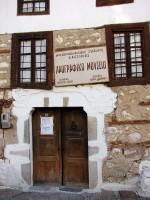
Kastoria Folklore Museum Entrance
Housed in Nerantzis-Aivazis Mansion |
|
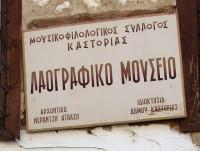
Kastoria Folklore Museum Entrance Sign |
|
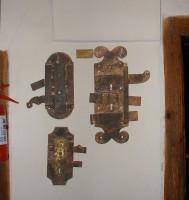
Kastoria Folklore Museum: Mansion Gate Locks |
|
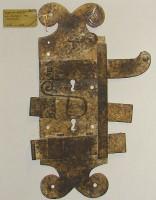
Kastoria Folklore Museum: Mansion Gate Locks
One of the locks shown in the previous photo |
|
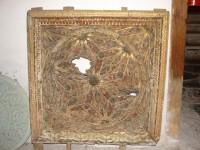
Kastoria Folklore Museum: Ceiling 'Navel'
Hand-carved wooden decoration resting against the entrance hall wall |
|
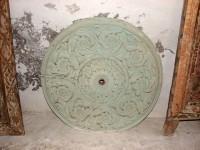
Kastoria Folklore Museum: Ceiling 'Navel' |
|
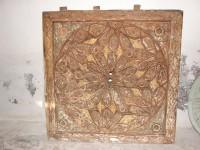
Kastoria Folklore Museum: Ceiling 'Navel' |
|
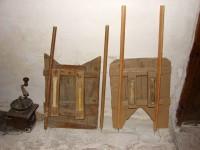
Kastoria Folklore Museum: Traditional Sledge
For rides on the frozen surface of the lake! Please note the bones fastened underneath, in the place of steel blades! |
|
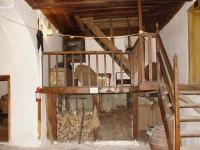
Kastoria Folklore Museum: Store Room with Loft |
|
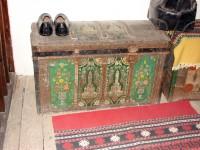
Kastoria Folklore Museum: The chest on the loft in the previous photo |
|
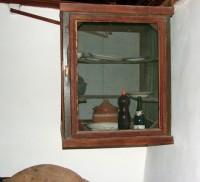
Kastoria Folklore Museum: The food safe |
|
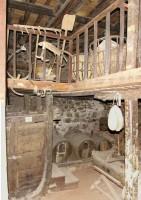
Kastoria Folklore Museum: Ground floor store room with loft |
|
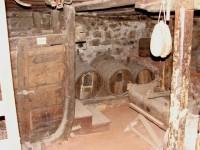
Kastoria Folklore Museum: Bottom half of the previous photo, the Wine Cellar |
|
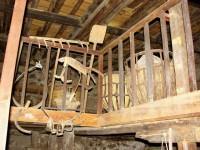
Kastoria Folklore Museum: Top half of the previous photo |
|
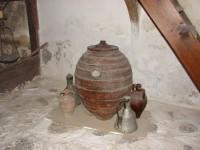
Kastoria Folklore Museum: Potable Water Jar |
|
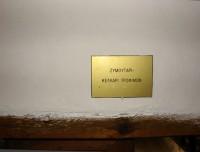
Kastoria Folklore Museum: Sign for Dough kneading Facilities and Commodity Store-room of the Mansion (in the following photos) |
|
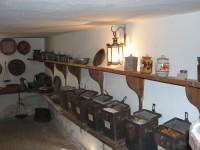
Kastoria Folklore Museum: Commodity Store-room of the Mansion |
|
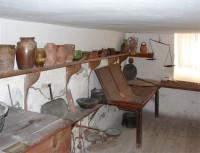
Kastoria Folklore Museum: Dough kneading Facilities of the Mansion |
|
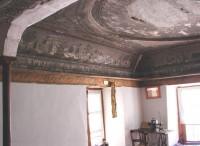
Kastoria Folklore Museum: Fur processing and fur-coat making workshop
The ceiling, heavily decorated, is gradually disintegrating. The vintage fur-coat sewing machine in the corner is shown in the next photo |
|
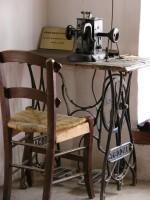
Kastoria Folklore Museum: The very first fur-coat sewing machine that ever came to Kastoria, make JACOBY |
|
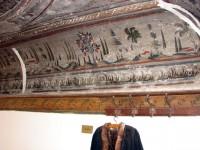
Kastoria Folklore Museum: Fur processing and fur-coat making workshop
Detail of the workshop wall decorations |
|
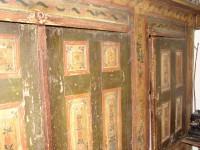
Kastoria Folklore Museum: Built-in wardrobe with decorated doors, locally called 'misandra' |
|
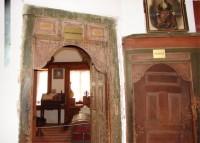
Kastoria Folklore Museum: Entrance to 'Iliakos' to the right and everyday 'Sitting-room' to the left.
(Please see introductory text to Kastoria Mansions Album) |
|
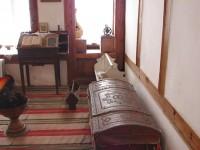
Kastoria Folklore Museum: Interior of the Sitting-room (Ondas) |
|
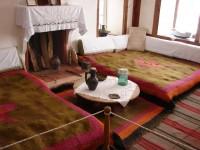
Kastoria Folklore Museum: Interior of the Sitting-room (Ondas)
The camera is pointing slightly to the left, compared to the previous photo |
|
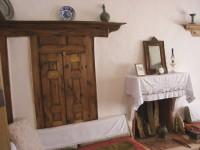
Kastoria Folklore Museum: Interior of the Sitting-room (Ondas)
The fireplace of the previous photo and a cupboard to the left |
|
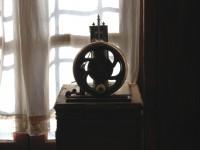
Kastoria Folklore Museum: Interior of the Sitting-room (Ondas)
Sewing machine resting on the window-sill (Photo diagonally up) |
|
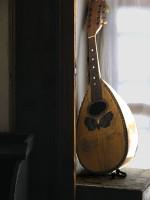
Kastoria Folklore Museum: Interior of the Sitting-room (Ondas)
Musical instrument resembling a lute, also on the window-sill |
|
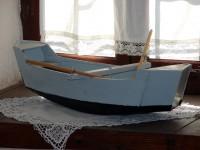
Kastoria Folklore Museum: Interior of the Sitting-room (Ondas)
Model of a 'Karavi', flat-bottom lake boat, also visible in one of the previous photos |
|
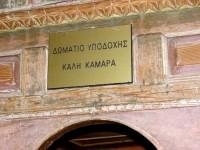
Kastoria Folklore Museum: Reception Hall Entrance |
|
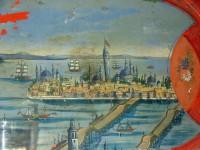
Kastoria Folklore Museum: Wall decorative painting of Constantinople, picturing Hagia Sophia Temple |
|
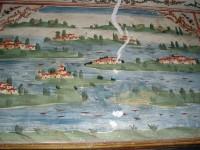
Kastoria Folklore Museum: More wall-paintings |
|
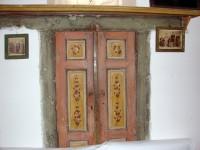
Kastoria Folklore Museum: Decorated Cupboard |
|
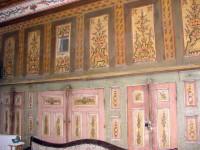
Kastoria Folklore Museum: Decorated Cupboards
Please notice the grilled opening: It was through this opening that the daughter of the family could secretly take a look and approve (or disapprove) the young man visiting to ask for the parents' concession to marry her. In case he was accepted, he was treated to sweet coffee, otherwise to bitter sugarless coffee; a speechless way to turn down a marriage proposal! |
|
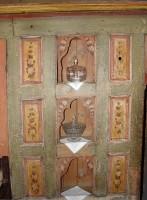
Kastoria Folklore Museum: Decorative niches in the cupboards |
|
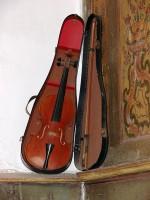
Kastoria Folklore Museum: Violin |
|
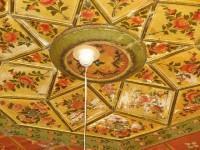
Kastoria Folklore Museum: Decorated ceiling of one of the sitting-rooms (Ondas)
The ugly electric light cable is a later addition! |
|
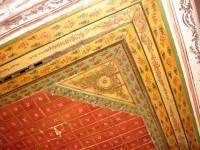
Kastoria Folklore Museum: Another decorated ceiling
They are made of wood, for insulation purposes, and painted (or carved) when in place, except for the central decorative element (the Navel), which was usually carved in the workshop and put in place last. |
|
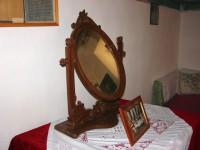
Kastoria Folklore Museum: Traditional mirror
Behind and above the mirror, a dowry declaration is framed and hanging on the wall. It consists of a detailed list of all moneys, jewellery, linen, clothes, blankets, kitchenware, cushions and pillows brought into the marriage by the bride, including a vineyard. |
|
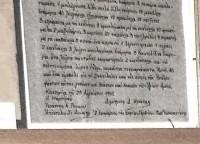
Kastoria Folklore Museum: The Dowry declaration partly visible in the previous photo |
|
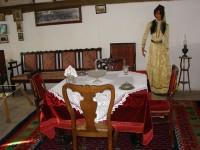
Kastoria Folklore Museum: 'Doxatos' Main Celebrations Room
This is where folk dancing as well used to take palce. |
|
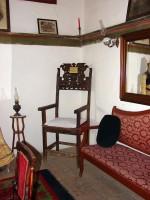
Kastoria Folklore Museum: 'Doxatos', Main Celebrations Room |
|
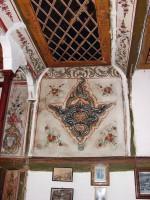
Kastoria Folklore Museum: 'Doxatos', Main Celebrations Room
Wall and ceiling decoration |
|
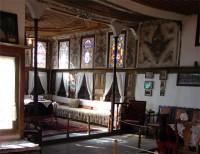
Kastoria Folklore Museum: The Kioski seen from the Doxatos
Mainly a gathering place for men. It had open views towards the South, East and West, i.e. over the lake as well. Most elegantly decorated and comfortable to sit and exchange views. |
|
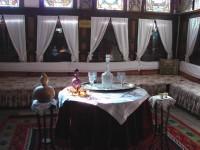
Kastoria Folklore Museum: Kioski
Not actually a kiosk, but a siiting room with plenty of light and panes to look through. |
|
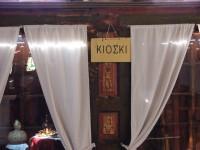
Kastoria Folklore Museum: Kioski |
|
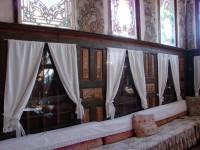
Kastoria Folklore Museum: Kioski |
|
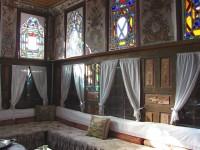
Kastoria Folklore Museum: Kioski |
|
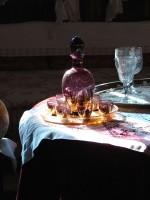
Kastoria Folklore Museum: Kioski
Sunlight falling on glassware |
|
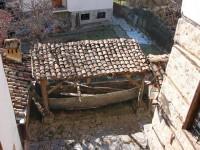
Kastoria Folklore Museum: The 'karavi' parking place
Covered to protect the boat from snowfall. It was at the end of a waterway connecting the Mansion to the lake. Nearly all goods and raw materials for fur processing were carried by boat. |
|
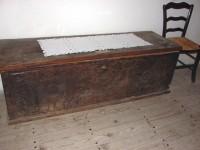
Kastoria Folklore Museum: Hand-made coffer with ornamental Crochet Hook work cover |
|
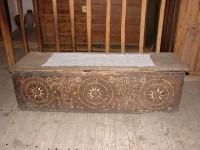
Kastoria Folklore Museum: Hand-made coffer with ornamental Crochet Hook work cover |
|
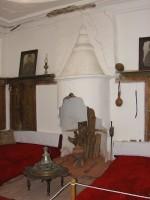
Kastoria Folklore Museum: Children Everyday Room with fireplace and bronze brazier |
|
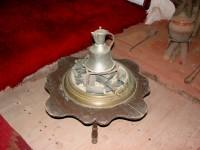
Kastoria Folklore Museum: Children Everyday Room, Brazier |
|
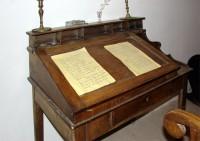
Kastoria Folklore Museum: Children Room, Desk with hand-written documents |
|
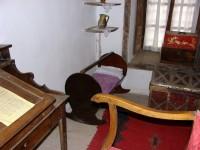
Kastoria Folklore Museum: Children Everyday Room, Craddle rocker |
|
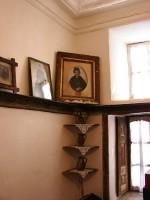
Kastoria Folklore Museum: Children Everyday Room, Shelf with photographs above the Craddle rocker |
|
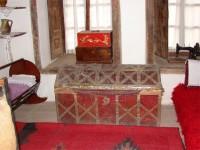
Kastoria Folklore Museum: Children Everyday Room |
|
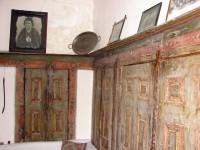
Kastoria Folklore Museum: The Small Everyday Room
It was parallel to the Doxatos. It is here that the bride-to-be was 'uncovered' (unveiled), for the bridesmaid to take her to the church, where the groom was waiting |
|
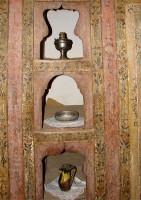
Kastoria Folklore Museum: The Small Everyday Room |
|
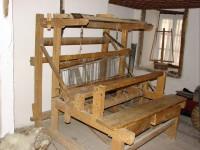
Kastoria Folklore Museum: The Loom |
|
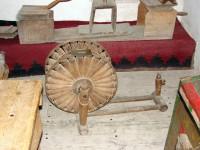
Kastoria Folklore Museum: The Reel |
|
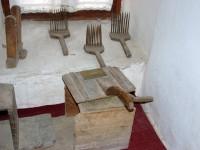
Kastoria Folklore Museum: The Comber and other utensils |
|
|



